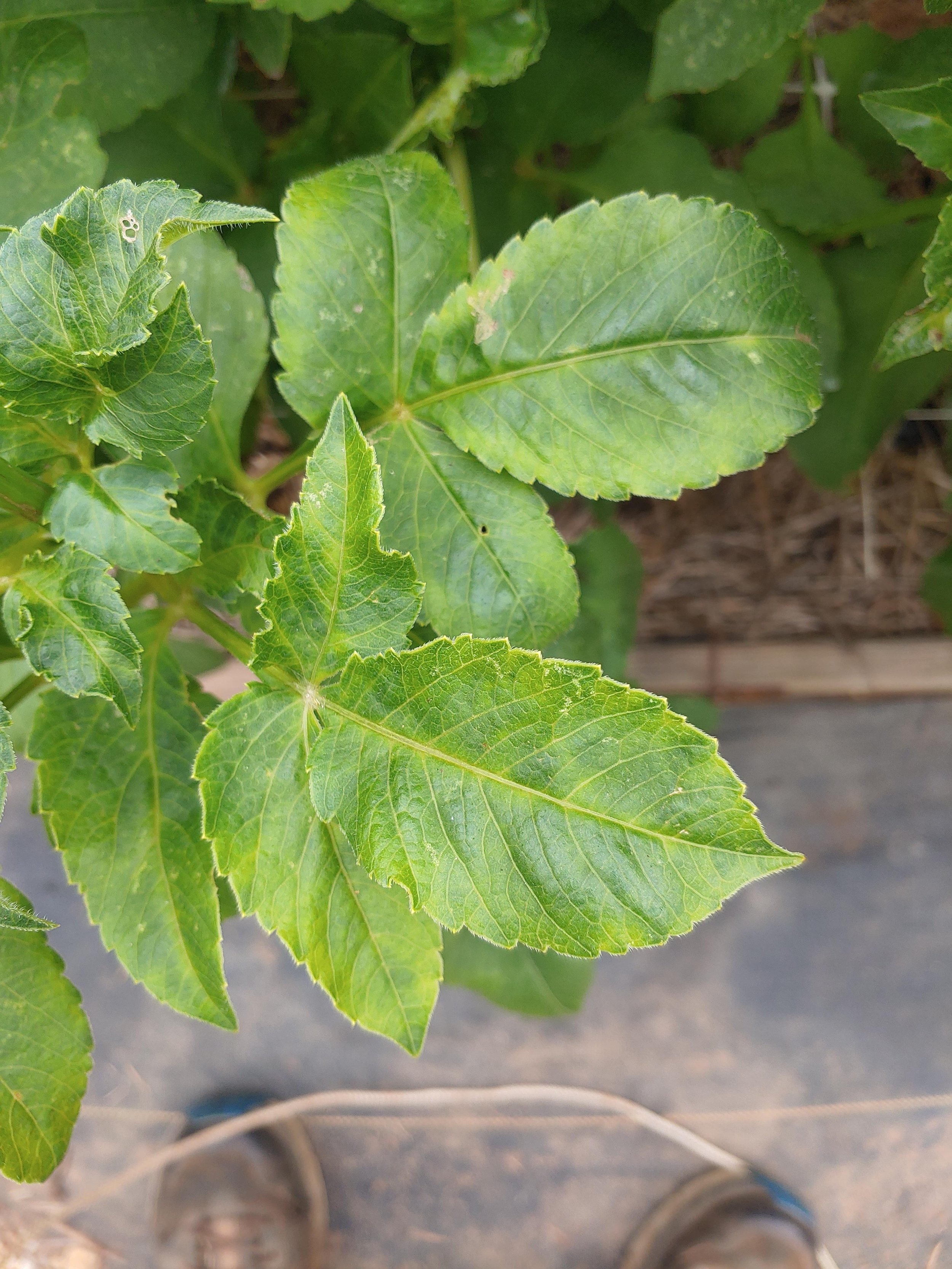Dahlia Game Plan 2024: Bug Control- Part 1
I’ve been getting so many emails about how to get rid of bugs that I know you all are ready for this post! So let’s get started! This is going to be a two part series because it’s just too much for one post.
There are (unfortunately) lots of bugs that like Dahlias- at least here in my hot Southern climate. If you live elsewhere, you may be fortunate enough to not have to deal with some of these (lucky you). I like to break the common pests list into 2 categories: those that do petal damage and those that do plant damage. Some do both.
Petal Damage:
-Thrips
-Japanese Beetles
-Cucumber Beetles
-Earwigs3
-Grasshoppers
Chewed up Peaches N Cream
Plant Damage:
-Thrips
-Leafhoppers
-Tarnished Plant Bugs
-Spider Mites
***Now you may wonder- Why do we care if a leaf gets damaged or nibbled? Well unfortunately, the plant damage caused by these pests is how viruses spread. So we have to care about it. ***
Luckily, the control methods for plant damaging pests often work for petal damaging pests and vice versa. However before we get to controlling pests, let’s talk about preventing them!
Prevention is key and the key to preventing pests is to scout and observe your crops! So what does that mean?
To be an effective scouter, you need to walk your field/garden on at least a weekly basis to specifically look for pests (diseases too). We have a big field so we walk with a clip board and the camera open on our phones. Pictures are a great documentation record. You can easily track changes from week to week. After the weekly scout, notes are compared. This information will then factor into what pest control or prevention methods we will use later on in the week.
Also after several years, you’ll be able to know when certain pests are going to appear in your area. This is when prevention really plays the biggest role in your bug battle.
Common Forms of Pest Prevention:
1. Timing - Adjusting the timing of your planting can mean you avoid certain pests attacks. For example, Japanese Beetles attack the worst during late May- early July in my area. They do the most damage to petals. So by moving our planting time to May, it means we don’t have lots of blooms until August. Thus avoiding the petal damage done by Japanese Beetles.
Now, I know a lot of home gardeners leave their tubers in the ground and this means blooms in June. So what are you to do? Well, the easiest idea would be to prune your plants back in early June and delay bug development. But if you must have blooms, I’d suggest the organza bag method. It’s the most full proof for preventing petal damage.
2. Water - Water is a powerful and easy prevention method. A few years ago we started using an overhead sprinkler to cool our dahlias in the middle of the day during the hot summer months. It worked well- 5-10 minutes twice a day during the hot part of the day. However, I also noticed that I didn’t have any powdery mildew on my crop until mid fall (when we stopped using the water to cool) and also the spider mite population was very low. So I started researching to see if it was just coincidence or if there was something real there. Turns out that powdery mildew comes on during period of heat and dryness but with high humidity. So by wetting the plants down each day, we were keeping the dryness at bay and cooling them. Also the water rinses off any PM spores that might be hanging out on the leaves. Spider mites also tend to attack when plants are stressed from heat and drought. So controlling those conditions led to a lower population of spider mites in the field.
Another way to use water is to simply have water in/near your field/garden. Bird baths, fish ponds, frog ponds, etc. Water brings in beneficial insects and animals very quickly. They all need it to survive. So if you provide it, they will come. Back in 2018, we added a duck pond and frog pond to our farm as means of controlling drainage/water run off. I saw a huge increase in the number of birds on our farm over the next year. Bullfrogs like crazy too!
3. Spray - There are a lot of pest control sprays out there than can be used when pest populations are low to prevent larger outbreaks. This leads into part 2 of this short series so we’ll talk about it more next time.



